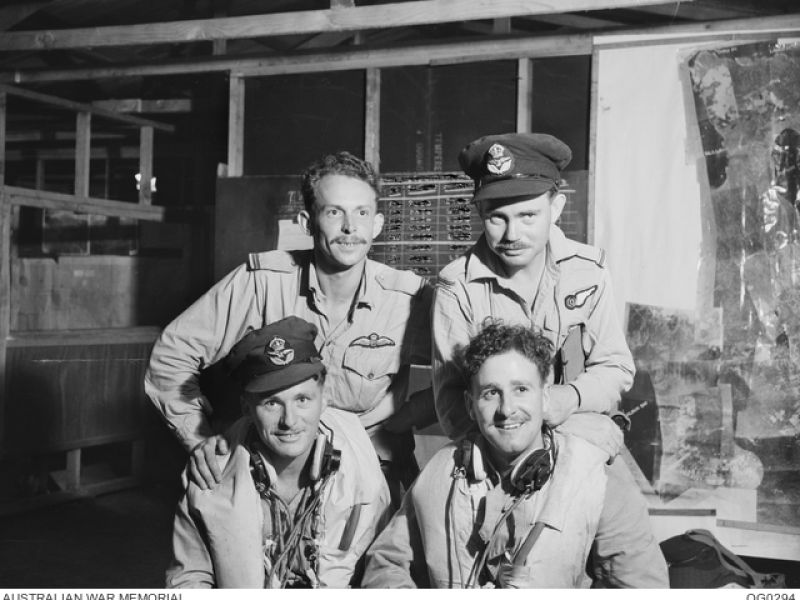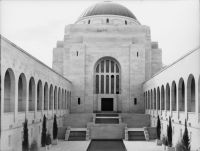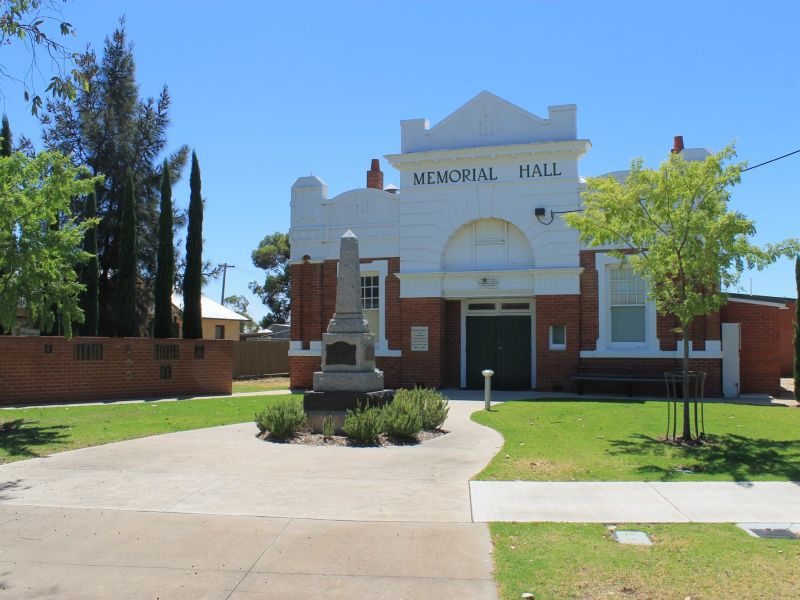Pilot Officer Edwin John Turk, No. 8 Squadron RAAF
Edwin John Turk was born on 10 August 1912 in Healesville, Victoria, the eldest of five children born to Edwin and Edith Turk. In his teens, Turk served as a senior cadet in a local militia force, and after his schooling he began work as a school teacher. He taught at the Nurcoung State School in the far west of Victoria, then Yarrawalla South State School, to the west of Echuca. He was an active member of the Nurcoung Cricket Club.
In August 1938 he married Evelyn Knight in Goroke, Victoria. The couple had one child together, Graeme, born in September 1941.
In October 1942, Edwin Turk travelled to Melbourne and enlisted in the Royal Australian Air Force. His younger brother Allan also took part in the Second World War: he joined the army and served in the 2/24th Battalion.
After enlisting, Edwin Turk trained at bases in Sale, Somers and Nhill in Victoria, and Mount Gambier in South Australia. In May 1943 he was granted a commission to become a pilot officer.
On 8 November 1943, he joined No. 100 Squadron, which flew Beaufighter aircraft in the war against Japan in the Pacific. With this squadron, Turk participated in reconnaissance flights and bombing raids on Japanese positions in New Guinea and the surrounding islands. In late November he participated in a major bombing raid on the Japanese airfield at Gasmata in New Britain, and in early December attacked an important Japanese bridge over the Amgen River.
A day after the attack on the bridge over the Amgen he transferred to No. 8 Squadron, RAAF. With this squadron he continued to fly Beaufighter missions over the Pacific islands, including attacks on Boroo and the Japanese airfield at Lakunai near Rabaul.
On Christmas Day 1943, Turk served as navigator aboard Beaufighter A9-444 and took part in a ten-aircraft bombing raid on Japanese positions near Rabaul. After successfully completing the raid, they returned to the airstrip at Vivigani on Goodenough Island shortly before seven in the morning. Turk’s Beaufighter made a normal circuit and approach to the strip, but as it came to land, it hit the ground hard and bounced roughly 20 feet into the air. The jolt from the bounce produced a heavy explosion on the aircraft’s starboard side, possibly from an unreleased bomb. The explosion thrust the tail into the air and the back of the aircraft disintegrated. The nose, tail and main fuselage crashed forward in a ball of flames, killing all four airmen aboard. They were Flying Officer Theodor Kleinig, Flying Officer Stanley Miller, Flight Sergeant Barry White, and Pilot Officer Edwin Turk.
Turk was 31 years old, and was survived by his wife and two-year-old son.
He is now buried in the Bomana War Cemetery in Port Moresby, where over 3,800 service personnel of the Second World War now lie.
- AWM Roll of Honour https://www.awm.gov.au/collection/R1715153

 Australian War Memorial
Australian War Memorial